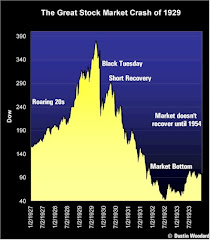It appears that most Canadians have recognized that Canada has a retirement crisis that needs to be fixed.
The debate is focused on two options. These are included in an article from the Globe and Mail entitled Upgrades to Canada Pension Plan likely to miss fall deadline.
Governments consider ways to boost retirement savings
Option 1: Building on CPP; Option 2: setting up supplemental, private-sector-run plan
Federal and provincial officials are working on two options to encourage Canadians to save more for retirement. Finance Minister Jim Flaherty announced in June that a majority of provinces supported both of these options in principle.
Option 1: Enhancing the Canada Pension Plan in its current form. This option has the benefit of simplicity because the CPP already exists and has a solid reputation. Any increase in retirement benefits must be paid for by higher premiums. Several unions want benefits to double, but Mr. Flaherty has suggested the changes would be more modest. Alberta opposes this option, warning it will cost jobs and take away consumer choice.
Option 2: Creating a supplemental pension plan run by the private sector. This option aims to help workers who are self-employed or work for a small business that does not offer a company pension. The challenge with this option is that it does not currently exist, so private-sector firms will need to be found that are willing to run the system at low cost. Officials are also grappling with how to ensure there is proper oversight so that prices are fair for consumers. There is also a debate about whether companies of a certain size should be required to offer this on an “opt-out” basis to ensure the program has enough members.Yesterday the Globe and Mail updated the debate aver this issue in Pension reform won’t be easy, Jim Flaherty warns
“This is not something that will happen quickly,” he said. “We have to first of all agree on where we’re going and make sure everybody’s happy with that. We already have at least one dissenting province and as you know there’s a quota rule in there, and I don’t know what the position of Quebec is.”The increased CPP program is endorsed by Canada's public sector labour unions who have already accumulated pensions worth in excess of $800 Billion. This contrasts with the CPP which has assets a little over $ 129 Billion. NUPGE - The top ten reasons to expand the Canada Pension Plan
Reforming CPP requires the support of two-thirds of the provinces representing two-thirds of Canada’s population.
Alberta Finance Minister Ted Morton supports this private-sector option, but remains strongly opposed to enhancing the existing CPP.
Mr. Morton told The Globe’s editorial board earlier this month that he fails to understand why broad enhancements to CPP are on the table when several studies have shown the problem of insufficient retirement savings is primarily limited to middle-income earners who work for small private-sector employers.
“So why, when you have a fairly narrowly defined retirement-income problem that needs to be solved, why do you come in with a CPP hike that hits everybody?” he asked rhetorically. “And particularly, why do you do it when we’re trying to come out of a recession and job creation is probably the most important thing governments are doing. In the end, it’s a payroll tax.”
Canadian pension expert Keith Ambachtsheer, who warned in September that the talks have fallen behind schedule, has recently offered another update.
Mr. Ambachtsheer, the director of the Rotman International Centre for Pension Management, said opinion appears to be coalescing around the idea of paying for benefit enhancements for middle-income earners by increasing the Year’s Maximum Pension Earnings (YMPE), which is currently set at $47,200. Under that scenario, CPP premiums would not increase for those earning less than the maximum, but those earning above the YMPE would pay CPP premiums for a longer period until they hit the new maximum.
“And there are those who continue to argue that ‘don’t fix what isn’t broken,’ and that we should instead focus our attention fully on the ‘private pension innovation’ path,” writes Mr. Ambachtsheer.
“There is increasing recognition that even the ‘raise the YMPE’ path has considerable implementation challenges attached to it.” Questions remain, he said, over how high to raise the YMPE, how to integrate with current [defined benefit] plans, how to test and explain intergenerational fairness and how to deal with serious disappointment by many when they realize that, whatever is done, it will only have major impact decades from now.
Expanding CPP will go a long way to improve the financial security of Canadian seniors.The Supplementary pension is one that has been implemented in other countries around the world. The UK is in the process of introducing the NEST program and New Zealand has plan called the Kiwi Saver. James Daw does a good job looking at some of the options available for the supplementary plan. Pension gap gets less air than long guns
Like all public programs and services, CPP is an important tie that binds us together as a nation. It is an expression of our collective commitment to one another and to the fundamental principle that all citizens have the right to income security and dignity.
We must seize the opportunity that exists today and demand that our political leaders across the country embrace this most sensible, affordable and effective approach to improving retirement security for all Canadians.
Sweden, Norway, the United Kingdom and New Zealand — have done recently to promote increased savings at a reduced cost, and what Saskatchwan pioneered in 1986.
Sweden started in 2000 to require workers to contribute 2.5 per cent of pay to individual pension accounts to provide benefits beyond its public pension plan.
Norway opted to require employers to offer defined-contribution pension plans for employees, and contribute 2 per cent of pay on incomes up to about $150,000.
The United Kingdom is set to require anyone without an occupational pension plan to contribute 4 per cent of pay up to about $55,000 a year to individual pension accounts administered by the government starting in 2012. It will require employers to contribute 3 per cent of pay by 2017 and the state will contribute 1 per cent.
New Zealand, which had a more generous version of our tax-supported Old Age Security pension but nothing like our tax-deferred RRSPs, started a Kiwi Saver program in 2007.
Workers were enrolled automatically and, unless they opt to drop out within the first eight weeks, are to contribute 2 per cent of salary (or up to 8 per cent if they wish), while employers are to contribute 2 per cent by 2011. The government offered cash and tax incentives to promote savings, but these were reduced after a change of government.Both plans will be a significant hike in payroll taxes for Canadian businesses. Will the cost outweigh the benefits of implementing either option?
What About the Public Sector?
It may appear surprising that the NUPGE (National Union of Public and General Employees) has anything to say about the pension issue. They have negotiated gold-plated pensions for their members at taxpayer's expense.
Public sector plans in Canada have accumulated $800 Billion in assets for the benefit of their members. And appear to be in the postion to pay out many multiples of what the average Canadian will get from the existing public CPP, OAS and GIS plans.
Ambachtsheer alludes to this in his comment
Questions remain, he said, over how high to raise the YMPE, how to integrate with current [defined benefit] plans, how to test and explain intergenerational fairness and how to deal with serious disappointment by many when they realize that, whatever is done, it will only have major impact decades from now.He realizes that currently public sector pensions are designed to pay out 70% of retiring income. Of this a portion is covered by the CPP and the rest is picked up by the pension plan. By doubling the amount paid by the CPP, shortfalls in public sector pension will be dramatically reduced or eliminated.
For example a government employee retiring on a $100,000 income will expect a pension of $70,000 per year. The pension will be covered by CPP payments of $11,208 and the remaining $58,792 per year will be picked up by the pension funds. By doubling the CPP to $22,416 the pension only needs to cover $37,584.
In the above example the pension would need about $ 940,00 to cover the pension for the government employee. By doubling the CPP portion the amount required by the pension plan drops to $761,000, a difference of $179,000.
So you can see the motivation for the public sector to be behind this move.
The taxpayers is out of pocket for gold-plated pensions either with the status-quo or the supplementary plan. It is just that the supplementary plan is more politically expedient for the public sector pension plans. The shortfall is covered by CPP payments rather than the unions having to fight government to cover pension
shortfalls.
Many public sector pensions will now have actual surpluses. What do you think will happen to those pensions with surpluses?
A) The surpluses are returned to taxpayers
B) The unions will fight for more pension enhancements? ie. earlier retirement ages or higher payouts?
It appears the options have been set for pension reform.
Will it really eliminate the problem of Canadians living in poverty? The average CPP payout today is around $ 6,060 per year. A doubling will bring them to $12,120.
How many retired Canadians can live off $12,120 per year mount?
Either way the public sector will still be getting gold-plated pensions.
Bill Tufts
Fair Pensions For All








